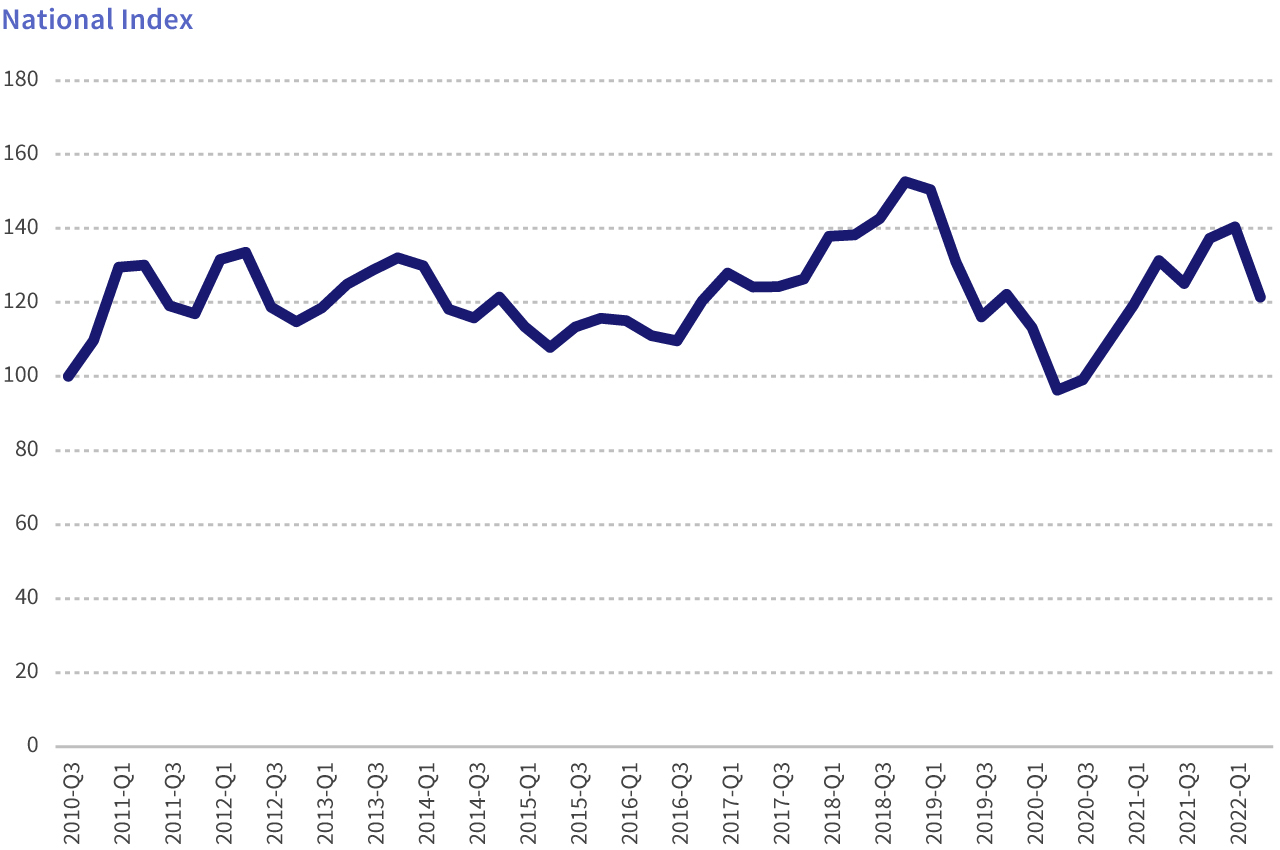 CoreLogic’s latest quarterly Mortgage Fraud Report shows a 7.5% year-over-year decrease in fraud risk at the end of Q2 of 2022, as measured by its Mortgage Application Fraud Risk Index. In Q2, an estimated 0.76% of all mortgage applications contained fraud–approximately one in every 131 applications. By comparison, Q2 of 2021, that estimate was 0.83%, or approximately one in 120 applications.
CoreLogic’s latest quarterly Mortgage Fraud Report shows a 7.5% year-over-year decrease in fraud risk at the end of Q2 of 2022, as measured by its Mortgage Application Fraud Risk Index. In Q2, an estimated 0.76% of all mortgage applications contained fraud–approximately one in every 131 applications. By comparison, Q2 of 2021, that estimate was 0.83%, or approximately one in 120 applications.
Risks of Income and Property Fraud posted the largest year-over-year increases in Q2, 27.3% and 22.6%, respectively. Authors of the report were not surprised, considering that purchase loans now account for more mortgage transactions than refis, and that the former are more susceptible to fraudulent activity.
“Income fraud risk remains a top concern for lenders, but there is a rising focus on property value risk as home prices slow their growth and homes are taking longer to sell,” said Bridget Berg, Principal, Industry & Fraud Solutions for CoreLogic. “CoreLogic data backs up those concerns, as our most predictive flags for both income and property frauds increased in the last year more than 20%.”
CoreLogic’s Mortgage Fraud Report analyzes the collective level of loan application fraud risk experienced in the mortgage industry each quarter. The company developed the Index based on residential mortgage loan applications processed by CoreLogic LoanSafe Fraud Manager, a predictive scoring technology.
Nationally, five of the six types of mortgage fraud types CoreLogic tracks– Identity, Income, Occupancy, Property, Transaction and Undisclosed Real Estate Debt–showed increased risks since Q2 of 2021. The exception was Undisclosed Real Estate Debt, which declined by 12%.

“Signs of a broader slowdown in the housing market are evident, as home price growth decelerated for the second consecutive month,” said Selma Hepp, CoreLogic’s Interim Lead, Deputy Chief Economist. “This is in line with our previous expectations and given the notable cooling of buyer demand due to higher mortgage rates and the resulting increased cost of homeownership. Nevertheless, buyers still remain interested which is keeping the market competitive–particularly for attractive homes that are properly priced.”
The top five states ranked for fraud risk increases included:
- Rhode Island
- South Dakota
- Kentucky
- New York
- Nebraska
Less-populous states were prone to volatile index values, as small groups of higher-risk loans were more likely to move the Index. For instance, Rhode Island’s 60% year-over-year fraud risk increase was in part due to a large share of government-backed loans, which have become riskier over the past year. New York moved into the top position for Mortgage Application Fraud Risk, with Florida, Rhode Island, Nevada, and Connecticut rounding out the top five.
Click here to view CoreLogic’s latest Mortgage Fraud Report in its entirety.

 DSNews The homepage of the servicing industry
DSNews The homepage of the servicing industry









